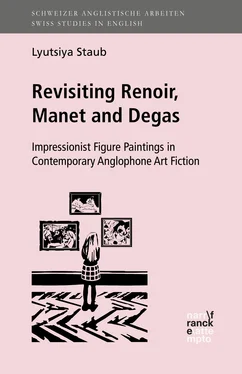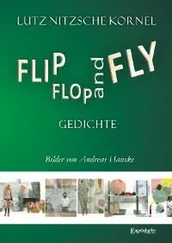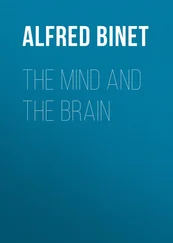Therefore, similarly to Yacobi, Scholz proposes that ekphrasis is “a term with a ‘family of meanings’, with each member of that family calling for a separate definition” (75). It may be assumed that because ekphrasis encompasses such a wide variety of forms of intermedial interaction, settling on one definition that would be restricted yet suitably broad enough to cover all the possible examples of ekphrastic texts is simply impossible. That is why I would argue that any definition of ekphrasis should be tailored to a specific area of study.
As shown in this chapter, the definition of ekphrasis has developed since late antiquity in a twofold process of restriction and expansion. Ekphrasis as a rhetorical device is based on the oral practice of enargeia and focuses mainly on the question of how to transform a listener into a viewer. However, understanding ekphrasis as a literary device shifts the focus from how to what , namely, to the subject matter itself, which is restricted to descriptions of physically existing or fictitious works of art in contemporary literature. The ekphrastic frame of reference is later extended to include not only contemporary but also ancient texts, both of which refer to the arts. Moreover, ekphrasis, originally used in descriptions of works of art, develops an interpretative function, and in doing so suggests another way of perceiving an artwork – via a literary text. Furthermore, ekphrasis is seen as a verbal representation that is driven by a narrative impulse to make explicit to the reader the story of the visual representation of an artwork. It is this storytelling impulse that encourages a new interpretation of any given artwork. Finally, ekphrasis is referred to as an umbrella term that could be used to define various forms of rendering visual objects into words. While a variety of definitions of ekphrasis have been suggested, the present study will adopt and modify the definition first suggested by Heffernan. Ekphrasis will be examined as a form of verbal-visual interaction in contemporary prose fiction, its primary focus one particular form of visual arts: painting.
Heffernan’s definition of ekphrasis as “the verbal representation of a visual representation” (3) refers to the fact that “ekphrasis uses one medium of representation to represent another” (4), in which case the artwork represented in an ekphrastic text is a representation of something in particular. A painting on the wall is a story and each story is an interpretation or representation of something. Ekphrasis is thus a form of double representation. The painting is transformed by the novelist’s imagination, reproduced as a narrative of the process of creating an artwork. According to Mitchell, all representations are founded on a triangular relationship “ of something or someone, by something or someone, to someone” (“Representation” 12, emphasis in original). Therefore, the painting may and should be regarded as the re-presentation of an artist’s representation, which itself becomes fiction. Both the representing verbal and the represented visual domains are nothing other than representations of the object (Yacobi, “The Ekphrastic Model” 22), which has been filtered and transformed by the painter’s projection of it onto canvas. Ekphrasis, as in the quotation, incorporates a three-dimensional representation that Yacobi categorises into “first-order, strictly ‘represented’; […] second-order, which is ‘representational’ in the visual mode; […] [and] third-order, which is ‘re-presentational’ in the linguistic discourse” (22). Furthermore, the reader “encounter[s] the original object […] at a twofold remove, as a second-level reflex, mediated by the pictorial image that the language itself mediates, re-images, quotes for us” (22, emphasis in original). In other words, first-order representation applies to the original object (a visual work of art) and the details that are “strictly represented”; second-order representation involves the visual representation – a pictorial image of the object and/or details; and third-order representation is a verbal “re-presentation” of the pictorial source. Developing further the parallel between ekphrasis and quotation theory, Yacobi contends that the visual representation is reconceptualised in the linguistic discourse in accordance with the writer’s frame of communication:
The visual source transforms in verbal re-imaging from a self-contained whole into a part of another whole, hence from end to means. So, like all quotation, and quotation alone, ekphrasis entails a peculiar logic of recontextualizing: the visual artifact becomes in transfer an inset within a verbal frame. Thereby it comes to signify in a new way and to serve new purposes, as well as to unfold on new medial axes, all of them determined by the writer’s frame of communication. (22-3, emphasis in original)
Here Yacobi draws attention to the fact that, as an inset into the verbal frame, the visual source obtains new meanings, that is to say, it is interpreted in a different way in order to serve the purpose of the writer’s intentions. Both the tripartite principle of representation of an art object and its multiple re-interpretations are the fundamental points that lead to a better understanding of ekphrasis. It is necessary to incorporate them into the definition of ekphrasis, which in this study will be understood as a verbal re-presentation and re-interpretation of a visual representation (painting).
2.1.2. The Diversity of Ekphrastic Relations
The amplitude of functions of ekphrasis has raised many questions among scholars as to how to approach and analyse ekphrastic texts. Taking into consideration all the alternative and experimental ways in which literature exploits visual arts and intertwines visual images and verbal texts, the question of how to categorise so many interactions is bound to arise. This section will review several attempts that have been made to establish systematic categories that identify, explain and help to analyse the diversity of ekphrastic interactions in literature.
Varieties of ekphrastic relations are thoroughly studied by Yacobi, whose work has been mentioned previously. Yacobi examines “interart traffic” (“Pictorial Models” 603) and attempts to classify the range of texts belonging to ekphrastic writing, suggesting a theoretical framework of four possible ekphrastic relations exhibited in literature, as illustrated in Table 1:
|
Visual Source (representation) |
Verbal Target (re-presentation) |
| 1 |
one |
one |
| 2 |
one |
many |
| 3 |
many |
one |
| 4 |
many |
many |
Table 1.
Four possible ekphrastic relations exhibited in literature (Yacobi, “Pictorial Models” 602)
The first two types, one-to-one and one-to-many relationships, are defined by a single visual source that is rendered into words by either one or many verbal targets. Additionally, the latter provides “re-presentational pluralities” (603). Yacobi points out that while these ekphrastic relationships have received due scholarly attention and been systematically studied, the other two – many-to-one and many-to-many relationships – have been broadly overlooked. Both the many-to-one and the many-to-many relationships make use of multiple visual sources for “verbal (re)modelling” (603). The many-to-one relationship “consists in a single instance of such modelling” (603), whereas the many-to-many “consists in a number of traditional or repeated performances, as when a writer, a school, or an age revisits a certain image […] common to various paintings” (603). This generalised visual image is what Yacobi calls the “ekphrastic model” (603), such as well-known scenes from the Bible, including the Last Supper, the Crucifixion, the Madonna and child etc. According to Yacobi, allusion to a familiar pictorial model “enables an author to be brief and yet inclusive, to re-cover much in little” (“The Ekphrastic Model” 27). In other words, a pictorial source can be re-covered either partially or entirely via only a single common detail, Mona Lisa’s smile, for example, or Monet’s lilies. At the same time it produces multiple interconnections and cross-references. Yacobi points out that the ekphrastic model works to “identify and integrate the inter-media transfer within the verbal discourse” (27). While the chances are greater of a reader overlooking a verbal allusion to a single visual work in one-to-one ekphrastic relationships (especially if this work is less popular or well-known), many-to-one ekphrastic relationships provide the reader with general references to common themes or features of artworks, thus ensuring “accessibility, familiarity, and uptake” (28). This theoretical framework of inter-art encounters in literature is invaluable for identifying and classifying ekphrastic texts in general, and it will be taken into account when developing categories of intermedial relations for further analysis of contemporary art fiction.
Читать дальше












